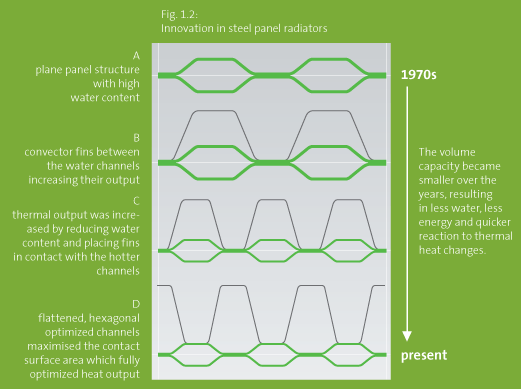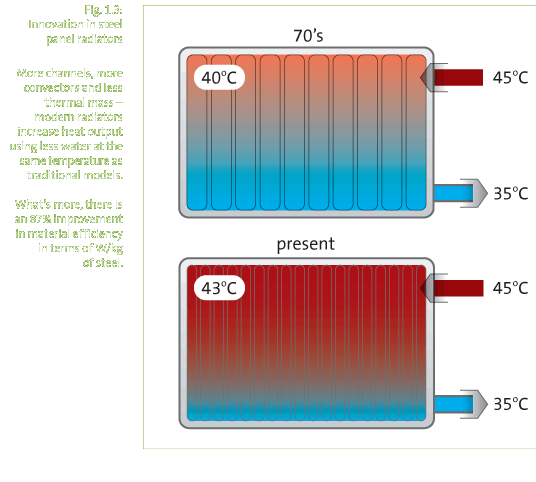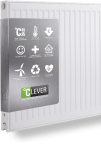- Contents
- Interview with Mikko Iivonen
- It’s time to change our way of thinking
- How insulation influences heating efficiency
- Interview with Professor Christer Harryson
- The increasing use of low temperature water systems
- Interview with Professor Dr. Jarek Kurnitski
- Significant proof
- Choosing a heat emitter
- Interview with Elo Dhaene
- Benefits to the end user

- Energy regulations > There are different national regulations across Europe for improvement of energy performance
- Renewable energy targets > Strict targets have placed significant pressure on building owners to reduce energy use
- Innovation of radiators > Reducing the water content and placing the fins in contact with the hotter channels has increased thermal output. With today’s designs, the material is up to 87% more efficient than in traditional models
Energy regulations
There are different national regulations across Europe for improvement of energy performance
Examples of renewable energy targets
France: from 10,3 % – up to 23 %
Germany: from 9,3 % – up to 18 %
UK: from 1,3 % – up to 15 %
Sweden: from 39 % – up to 49 %
Strict targets have placed significant pressure on building owners to minimise energy use
Examples of reduction targets
Our responsibility is to provide the most energyefficient and cost-effective way of creating a comfortable indoor climate
There is growing public concern about the environment, and increasing consumer preference for environmentfriendly products and processes. It is clearly time to re-evaluate the way the heating industry works, as guidelined by Ecodesign directive ErP 2009/125/EC. Our responsibility to end-users is to provide the most energyefficient and cost-effective way to create a comfortable indoor climate. Although a number of different heating solutions are available, there is continuing confusion about which to choose.
In order for end-users installers and planners to make an informed choice, it is important that accurate information on heating solutions is made available. As of the use of low temperature central heating systems continues to grow, Purmo has created this guide to explain the growing role that radiators have to play in the heating technology industry today.
Fig. 1.1
Roadmap of some countries towards nearly zero energy buildings to improve the energy performance of new buildings. REHV A Journal 3/2011
Innovation
Reducing the water content and placing the fins in contact with the hotter channels has increased thermal output
Radiators have come a long way from the bulky column designs of 40 years ago (Fig. 1.2). The early steel panel forms had a plane panel structure and high water content (A). Next came the introduction of convector fins between the water channels, increasing their output (B). Over the years, it was discovered that the thermal output could be increased by reducing the water content and placing the fins in contact with the hotter channels (C). It wasn’t until the channels were flattened, in the hexagonal optimized form illustrated here, that the contact surface area was maximised and heat output fully optimized (D).

Up to 87% better
With today’s designs, the material efficiency is up to 87% more efficient than in traditional models
Computer simulation has also helped to significantly improve energy efficiency in recent years: optimising the flow of heating water through the radiator, heat transmission to the convector fins, and calculating the optimum radiant and convected heat to the room. With today’s designs the material efficiency is up to 87% better than in traditional models, yet many people still hold on to an outdated image of radiators that was surpassed decades ago (Fig. 1.3)







